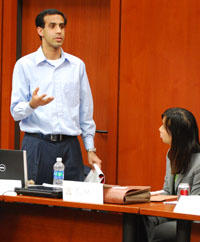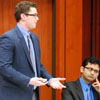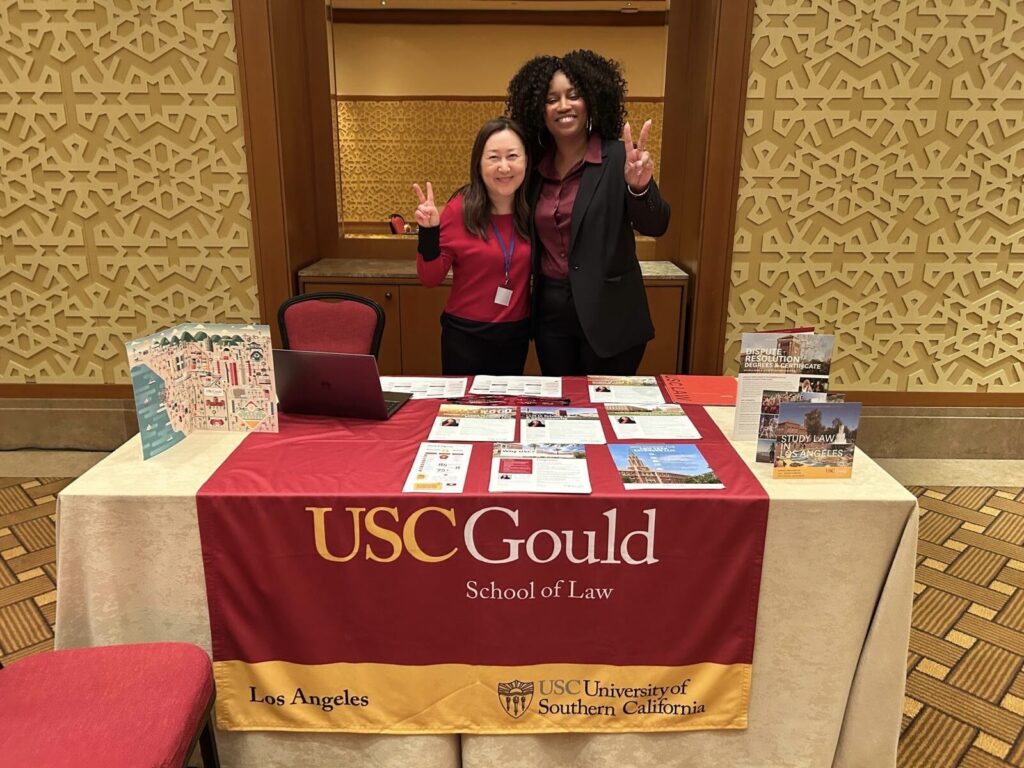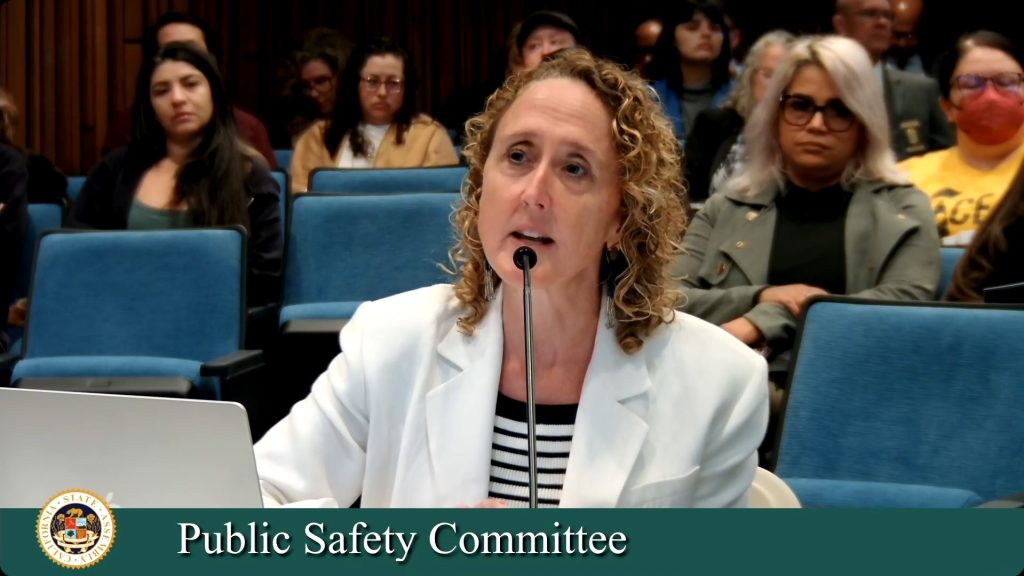J.D. and MBA students team up to innovate solutions
-Story and photos by Lori Craig
In Prof. Gillian Hadfield’s Advanced Contracts class, students role play as both lawyers and clients to approach contract problems from both sides of the table. Hadfield’s student Philip Castro ’11, president of the Gould/Marshall Alliance, a club that builds relationships between USC law and business students, thought the latter might be better suited for the role of client and further challenge the law student “lawyers.”
 |
| Prof. Gillian Hadfield, right, encouraged the J.D. and MBA students to challenge each other. |
He pitched the idea, and an interdisciplinary, interschool collaboration was formed: J.D. students from Advanced Contracts would sign up for an extracurricular case study in which they and volunteer MBA students would find a solution for a real company facing a very real business challenge.
“We thought the business students would be able to bring a large amount of expertise to role playing as clients,” Castro says. “They could bring the marketing or finance issues they were worried about to the table. It was also a chance to get the two groups together to learn how to work together and compel the law students to explain and pitch their ideas in a way that their non-lawyer clients could understand.”
The project involved a Toronto company whose complex and lengthy contract was delaying or preventing clients from signing on. The 13 J.D. students formed three “law firms” while 11 MBA students took the role of the company’s executive team. In the first two-hour session, the students brainstormed about what the executives wanted from a new contract and how the law firms might provide that. In the second session, each firm pitched its new and improved contract to the executives, who selected the best proposal.
“My goal is to have students who both know what the conventional contract looks like and why it looks like that, who can think up 11 different ways to do it differently and who can cogently work with a client to decide what the real risks, tradeoffs and rewards are of the full set of alternatives,” Hadfield says.
 |
| Rishi Wadhwani '10 |
Things got a bit tense when the business students had some trouble understanding complex contract issues, says Paul Del Piero, a J.D./MBA student who helped organize his business school classmates’ participation.
“But at the end of the day, everyone came together with the understanding that we were all on the same team,” Del Piero says. “So then the question was: ‘What was the best way to leverage our knowledge – both legal and business – to solve this problem?’ MBAs and J.D.'s are going to be working together for the rest of their lives, and the better the two groups learn to communicate with each other now, the better that work relationship will be in the future.”
“This was a successful experiment because I learned a lot about what we need to teach, and the challenges of accomplishing that,” Hadfield says. “The law students did a great job taking what they had learned about contract drafting and applying it to this problem. And the MBA students pushed hard to get what they needed in an innovative approach to contracting. The great challenge is to get each of these groups to understand more about how the other side works and to innovate new solutions to old problems. I’m very enthusiastic about the prospect of developing a full-semester course with both law students and MBA students that accomplishes this. This was a great first step.”

















